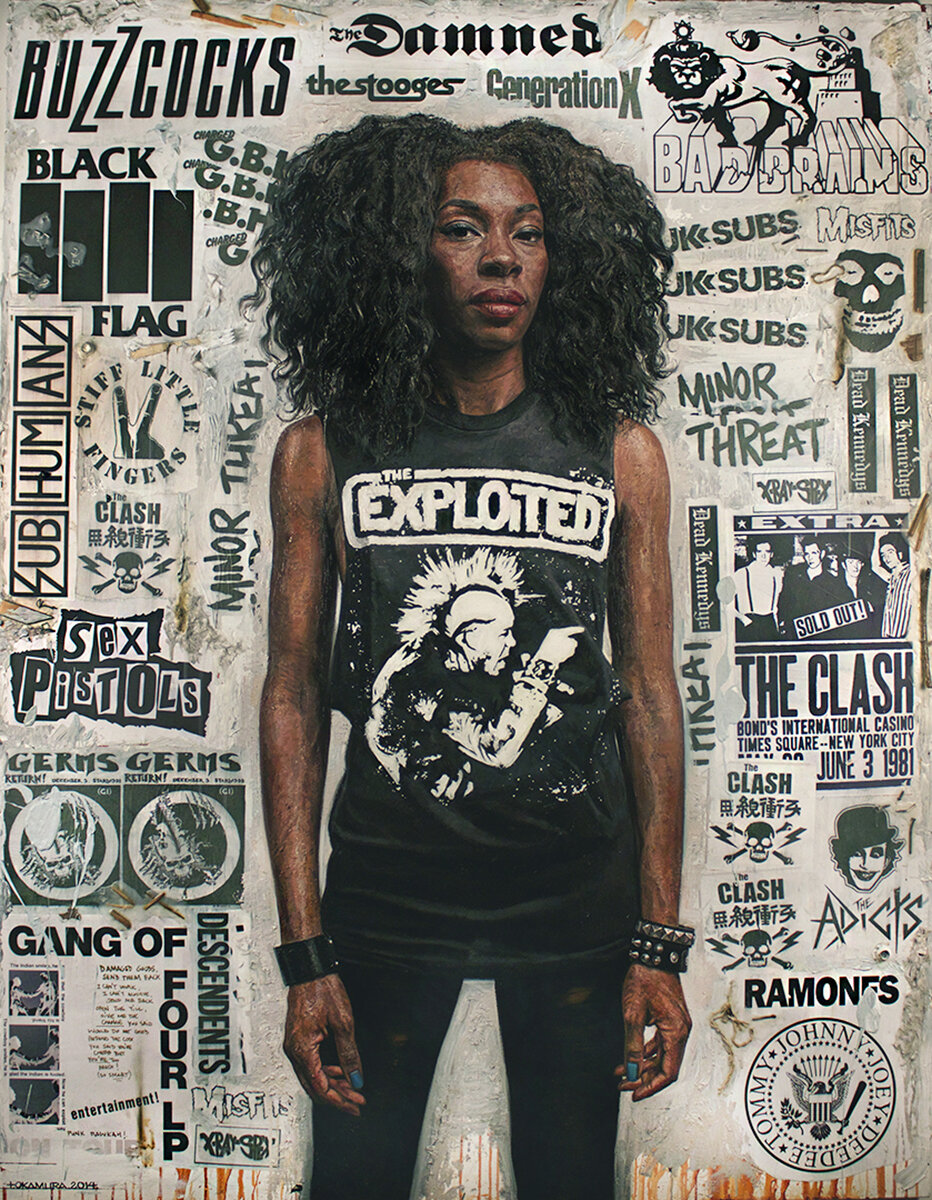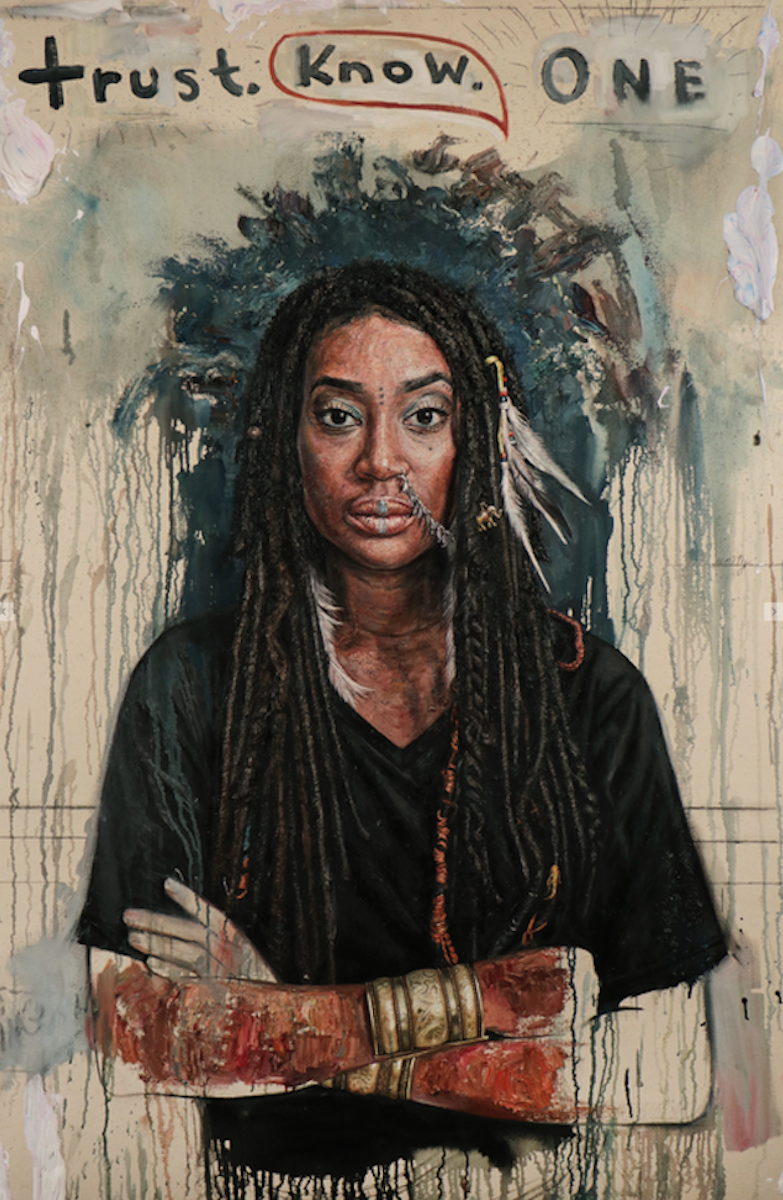Artist Feature: Tim Okamura
"This is a celebration of my community - portraits of powerful women"
Tim Okamura investigates identity, the urban landscape, and cultural iconography through painting portraits. While exploring all of his captivating portraiture, I found myself most curious about his story and his impulse to paint such powerful portraits of powerful women, and primarily women of color. I reached out to Tim and learned that the subjects in his work are his friends, his family, and his community. He also helped me understand his place in the world of his subjects.
“My world looks like the world in my paintings – A very big part of who I am, my experience, and the culture I have been part of since I was kid. In the late 80s/ early 90s, I had a hip-hop radio show in Calgary, where I was given the opportunity to connect with lots of hip-hop artists on my show. I became very involved in that scene, which organically synched up when I moved to New York, where I did art for different hip-hop projects and publications. And it grew from there.
It was never a big decision or strategy in regards to who or what my work represents. First off, I love portraits and I love realism. So, when I first started creating portraits, I asked myself, ‘Who do I want to paint? Who is most compelling to me?’ Being half Japanese, I was very much integrated into a large culturally diverse group since a child and I was always compelled by street culture, so I started with my classmates and friends as subjects. Soon, I shifted focus to women because I was curious about the female psyche and because they were less familiar subjects that I was interested in learning about – as an artist and a human. I wanted to paint portraits unlike other portraits, something that I hadn’t seen. So my path with painting women began, and a path of investigating my own identity as well.
Once you start down a path there are a lot of discoveries along the way that seem to be waiting for you, and the further I went down this path of painting women as my subjects, the deeper the stories got and the more feedback I received. The most important thing I realized were the questions of painting people who have been under-represented in the history of art, the history of portraiture. I soon became part of a small movement of people who were looking to correct that.With art – you come to realize – its not just about the work, it just doesn’t end there but, who made it. Sometimes it doesn’t always line up as the viewer imagined. That part of my work I didn’t intend to be conceptual, but it has challenged people’s ideas of who can represent who through art. People can quickly sense if artwork is from a place of authenticity or not – my messages are positive and so are my representations and this is a celebration of my community.
I feel it is very important to listen to each other’s stories and try to take part in story telling rituals such as painting, writing, and acting. Part of making progress is us sharing – celebrating each other’s cultures and sharing each others individuality – and sharing with an open heart. This a very big part of what I stand for.”
+ + +
Born in Edmonton, Canada, painter Tim Okamura earned a BFA from the Alberta College of Art and Design in Calgary, Canada before moving to New York City to attend the School of Visual Arts in 1991. After graduating with an MFA in Illustration as Visual Journalism, he moved to Brooklyn, New York, where he continues to live and work. Okamura has exhibited extensively in galleries throughout the world, including the US, Canada, Italy, Japan, Ecuador, and Turkey. He has received several awards and his work is part of several private and public collections throughout the globe.





























